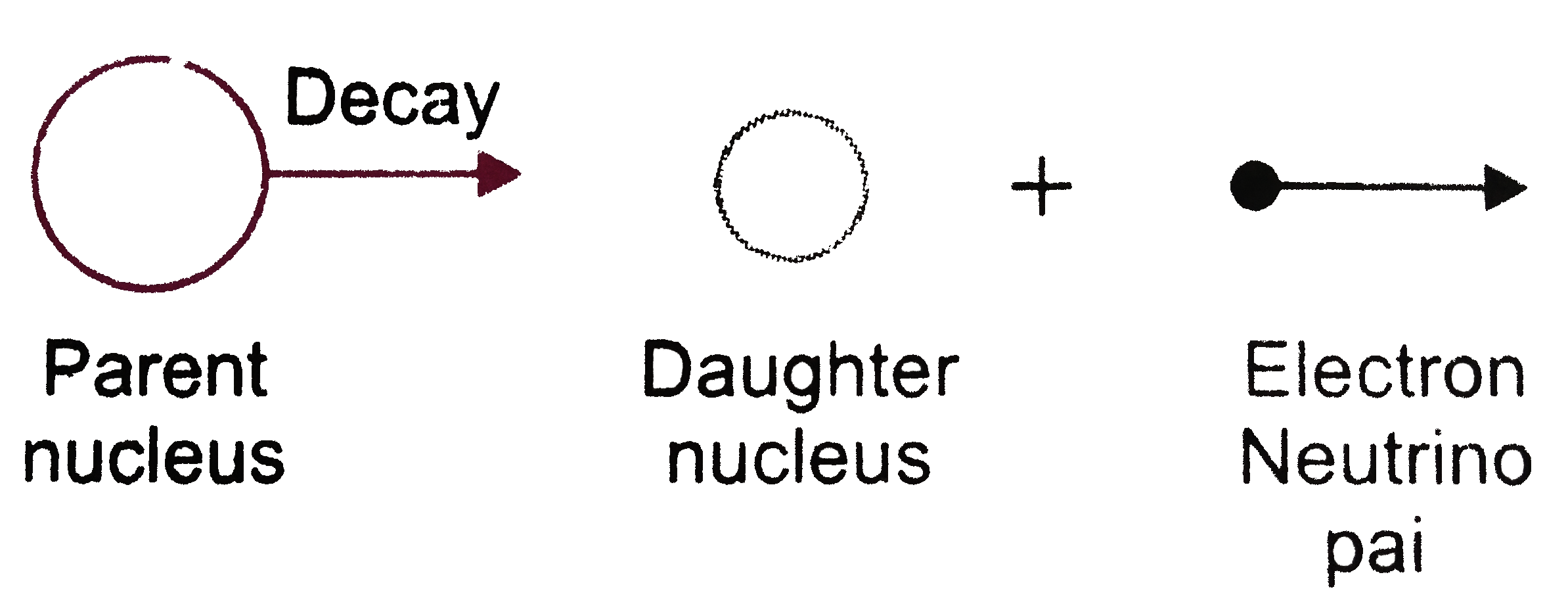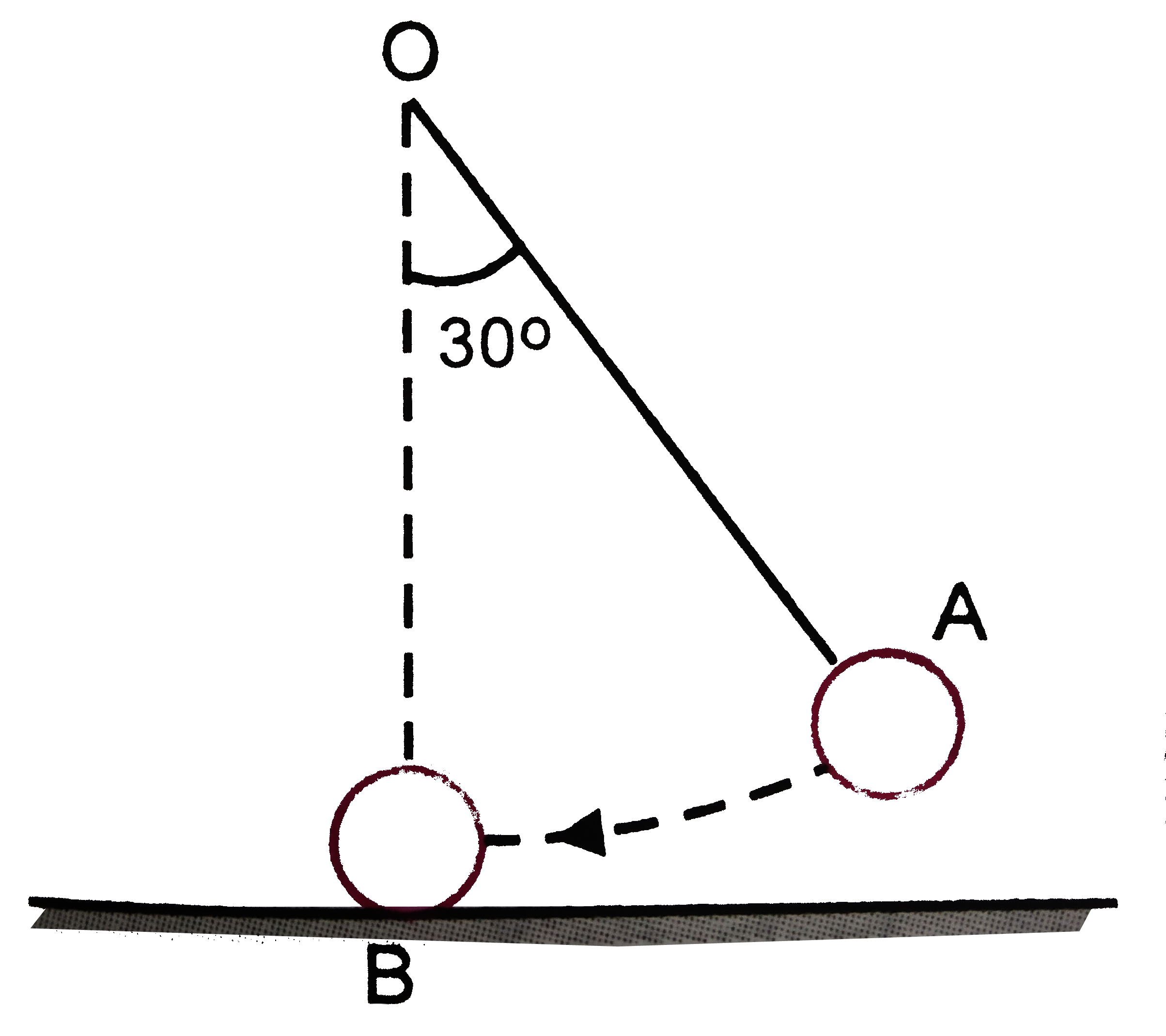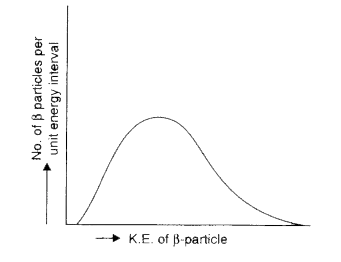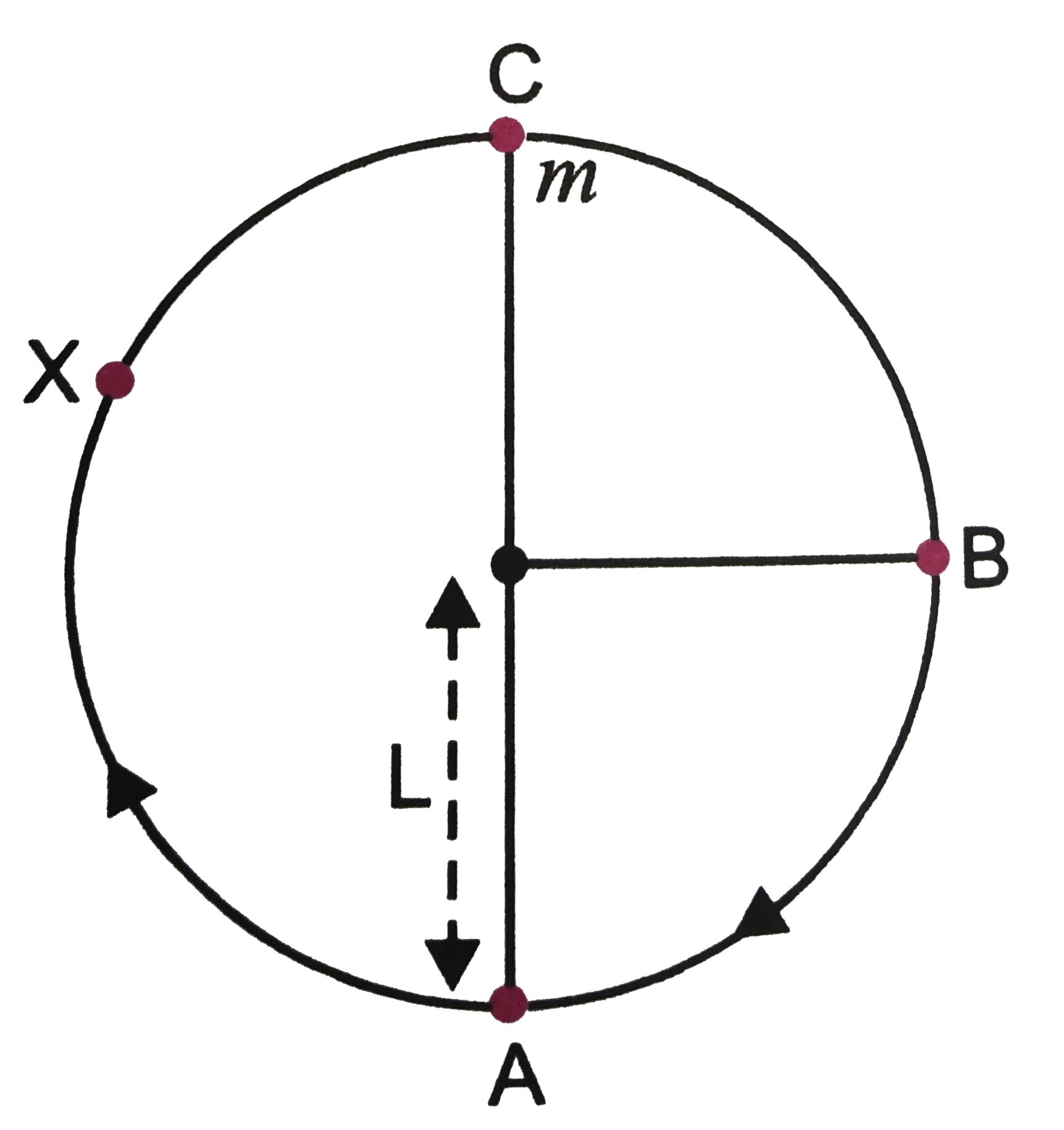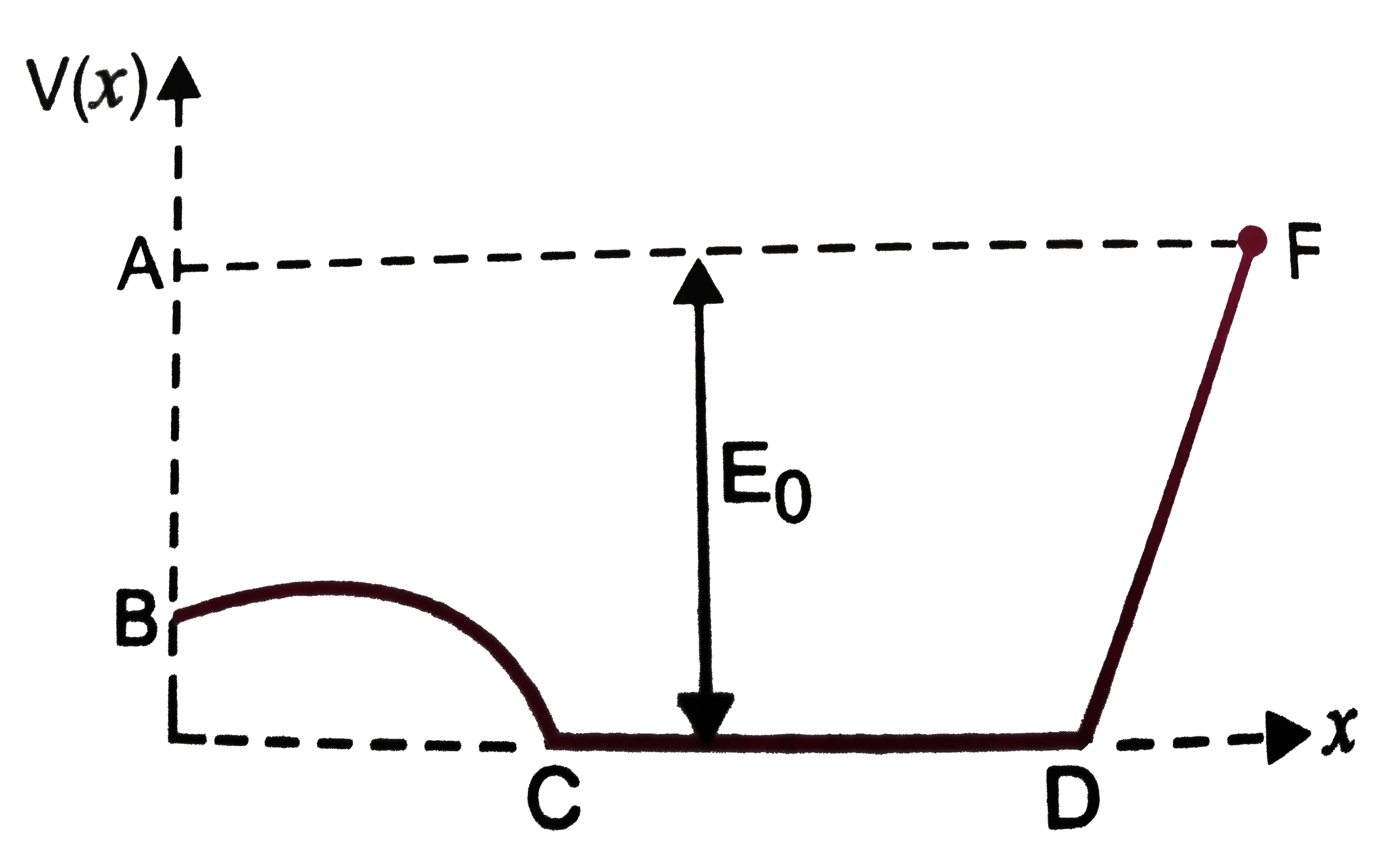Very Short Anwer Question. from PRADEEP PHYSICS (HINGLISH) WORK, ENERGY AND POWER for Class 11
| Class 11 | PHYSICS |
| Chapter | WORK, ENERGY AND POWER |
| PRADEEP PHYSICS (HINGLISH) | Very Short Anwer Question. |
| Medium | English |
| Academic Year | 2023-2024 |
Question 30
The displacement x of particle moving in one dimension, under the action of a constant force is related to the time t by the equation t=√x+3
where xis∈metersandt∈seconds . Find
(i) The displacement of the particle when its velocity is zero , and
(ii) The work done by the force in the first 6seconds. View SolutionQuestion 32
A woman pushes a trunk on a railway platform which has a rough surface. She applies a force of 100N over a distance of 10m. Thereafter, she gets progressively tired and her applied force reduces linearly with distance to 50N. The total distance through which trunk has been moved is 20m. Plot the force applied by the woman and the frictional force, which is 50N against the distance. Calculat the work done by the two forces over 20m. View SolutionQuestion 38
Two identical 5kg blocks are moving with same speed of 2m/s towards each other along a friction less horizontal surface . The two blocks collide , stick together and come to rest. Consider the two blocks as a system . The work done by the external and ijnternal force are respectively:View SolutionQuestion 41
It is well known that a rain drop falls under the influence of the downward gravitational force and the opposing resistive force. The latter is known to be proportional to the speed of the drop, but is otherwise undetermined. Consider a drop of mass 1.0g falling from a height of 1.00km. It hits the ground with a speed of 50.0ms−1 (a) What is the work done by the gravitational force ? (b) What is the work done by the unknown resistive force ?View SolutionQuestion 44
A block of mass m=1kg moving on a horizontal surface with speed vi=2ms−1 enters a rough patch ranging from x0.10m→x=2.01m. The retarding force Fr on the block in this range ins inversely proportional to x over this range
Fr=−kxfor0.1<x<2.01m
=0 for <0.1m and x>2.01m where k=0.5J. What is the final K.E. and speed vf of the block as it crosses the patch?View SolutionQuestion 45
To stimulat car accidents, the auto manufacturers study the collisions of moving cars with mounted springs of different spring constants. Consider a typical simulation with a car of mass 1000kg moving with a speed of 18.0km/h on a smooth road and colliding with a horizontally mounted spring of spring constant 6.25×103Nm−1. What is the maximum compression of the spring?View SolutionQuestion 60
Two blocksA andB are connected to each other by a string and a spring , the spring pases and a frictionlesss pulley as down over in the figure . Block B sides over the horizental top surface of a strionry block C both with the verical side of C , both with the same conform speed
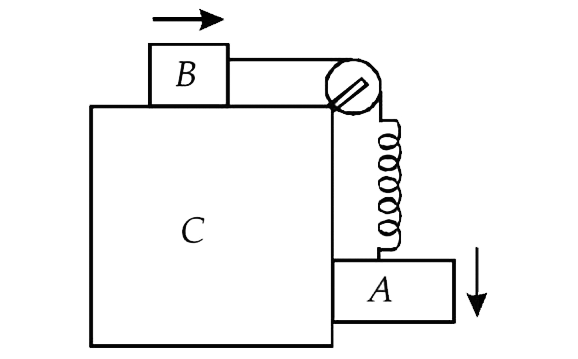
The coefficient of friction between the surface the of block is 0.2 force constant of the spring is 1960 newtons , if mass of block A is 2 kg , celculate the mass of block F and B and the energy stored is the spring View Solution
View SolutionQuestion 68
An electric motor is used to lift an elevator and its load (total mass 1500kg) to a height of 20m. The time taken for the job is 20s. What work is done ? What is the rate at which work is done. If efficiency of the motor is 75%, at which rate is the energy supplied to the motor?View SolutionQuestion 80
In a nuclear reactor, a neutron of high speed (≈107ms−1) must be slowed down to 103ms−1 so that it can have a high probality of interacting with isotipe _92U235 and causing it to fission. Show that a neutron can lose most of its K.E. in an elastic collision with a light nuclei like deuterium or carbon which has a mass of only a fewe times the neutron mass. The material making up the light nuclei usually heavy water (D2O) or graphite is called modertaor. View SolutionQuestion 81
Consider the collision depicted in Figure, to be between two billiard balls with equal masses m1=m2. The first ball is called the cue and the second ball is called the target. The billiard player wants to sink the target ball in a corner pocket, which is at an angle θ2=ϕ=37∘. Assume that the collision is elastic and that friction and rotational motion are not important. Obtain θ1=θ . View SolutionQuestion 82
A and B are two particles having the same mass m. A is moving along X-axis with a speed of 10ms−1 and B is at rest. After undergoing a perfectly elastic collision with B, particle A gets scattered through an angle of 30∘. What is th edirection of motion of B, and the speeds of A and B, after the collision?View SolutionQuestion 83
Two particles A and B of masses m and 2m are moving along the X-axis and Y-axis respectively with the same speed v. They collide at the origin and coalesce into one body, after the collision. What is the velocity of this coalesced mass? What is the loss of energy during this collision?View SolutionQuestion 85
A toy rocket of mass 0.1 kg hass a small fuel of mass 0.02 kg, which it burns out in 3s. Starting from rest on a horizontal smooth track, it gets a speed of 20ms−1 after the fuel is burnt out. What is the approcimate thrust of the rocket ? What is the energy content per unit mass of the fuel ? (Ignore the small mass variation of teh rocket during fuel burning).View SolutionQuestion 86
A bob of mass m is suspended by a light string of length L. It is imparted a horizontal velocity v0 at the lowest point A such that it completes a semi-circular trajectory in the vertical plane with the string becoming slack on reaching the topmost point C, figure, Obtain an expression for (i) v0 (ii) the speeds at points B and C, (ii) the ration of kinetic energies (KB/KC) at B and C.
Comment on the nature of the trajectory of the bob after it reahes the poing C.
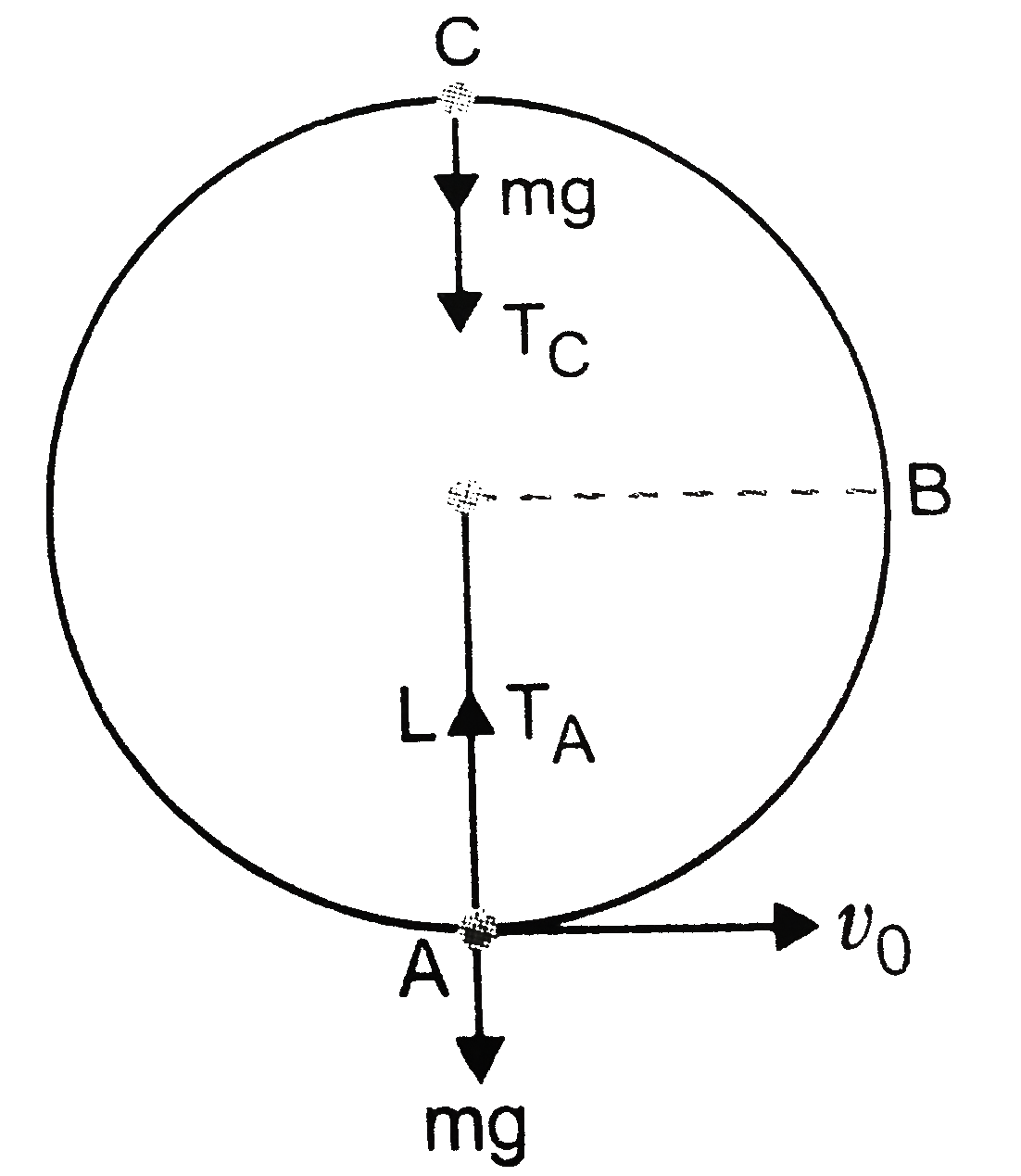 View Solution
View SolutionQuestion 90
Aparticle of mass 1 g executes an oscillatory motion on the concave surface of a spherical dish of radius 2m placed on a horizontal plane, Figure . If the motion of the particle begins from a point on the dis at a height of 1 cm. from the horizontal plane and coefficient of friction is 0.01 , fing the total distance covered by the particle before coming to rest.
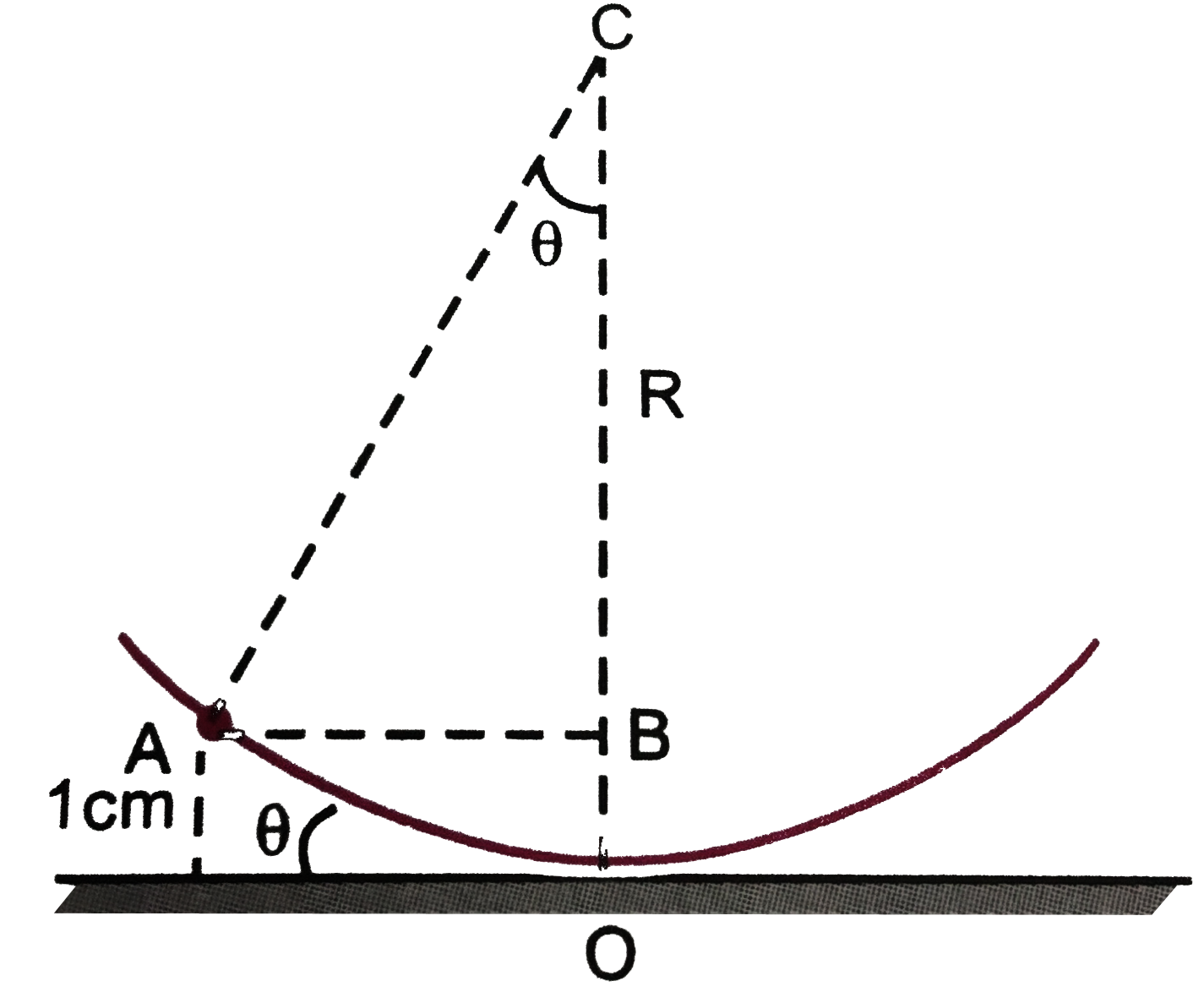 View Solution
View SolutionQuestion 92
A 100 metric ton engine is moving up a slope of gradient 5∘ at a speed of 100 metre/ hour. The coefficient of friction between the engine and the rails is 0.1. If engine has an efficiency of 4% for converting heat into work, find the amount of coal the engine has to burn in one hour. Burning of 1 kg coal yields 50000J. View SolutionQuestion 110
The absolute value of potential energy (and therefore total energy ) has no physical significance. It is the difference of potential energies that matters. One can, therefore, add or subtract a constant to the potential energy (provided we do it to potential energy at every position for a given force) without any change in the physical situation. By convention, for forces which fall off to zero at large distances, the potential energy at infinity is taken to be zero. With this choice, is the potential energy positive or negaive for (a) electron bound state, (b) planet-satellite system, (c) electron-electron system?View SolutionQuestion 120
In a nuclear reactor, a neutron of high speed (≈107ms−1) must be slowed down to 103ms−1 so that it can have a high probality of interacting with isotipe _92U235 and causing it to fission. Show that a neutron can lose most of its K.E. in an elastic collision with a light nuclei like deuterium or carbon which has a mass of only a fewe times the neutron mass. The material making up the light nuclei usually heavy water (D2O) or graphite is called modertaor. View SolutionQuestion 190
The potential energy function for a particle executing simple harmonic motion is given by V(x)=12kx2, where k is the force constant of the oscillatore. For k=12Nm−1, show that a particle of total energy 1 joule moving under this potential must turn back when it reaches x=±2m.View SolutionQuestion 195
A bullet of mass 0.01J kg and travelling at a speed of 500m/s strikes a block of mass 2 kg which is suspended by a string of length 5m. The cnetre of gravity of the block is found to rise a vertical distance of 0.1m, figure. What is the speed of the bullet after it emerges from the block ? (g=9.8m/s2).
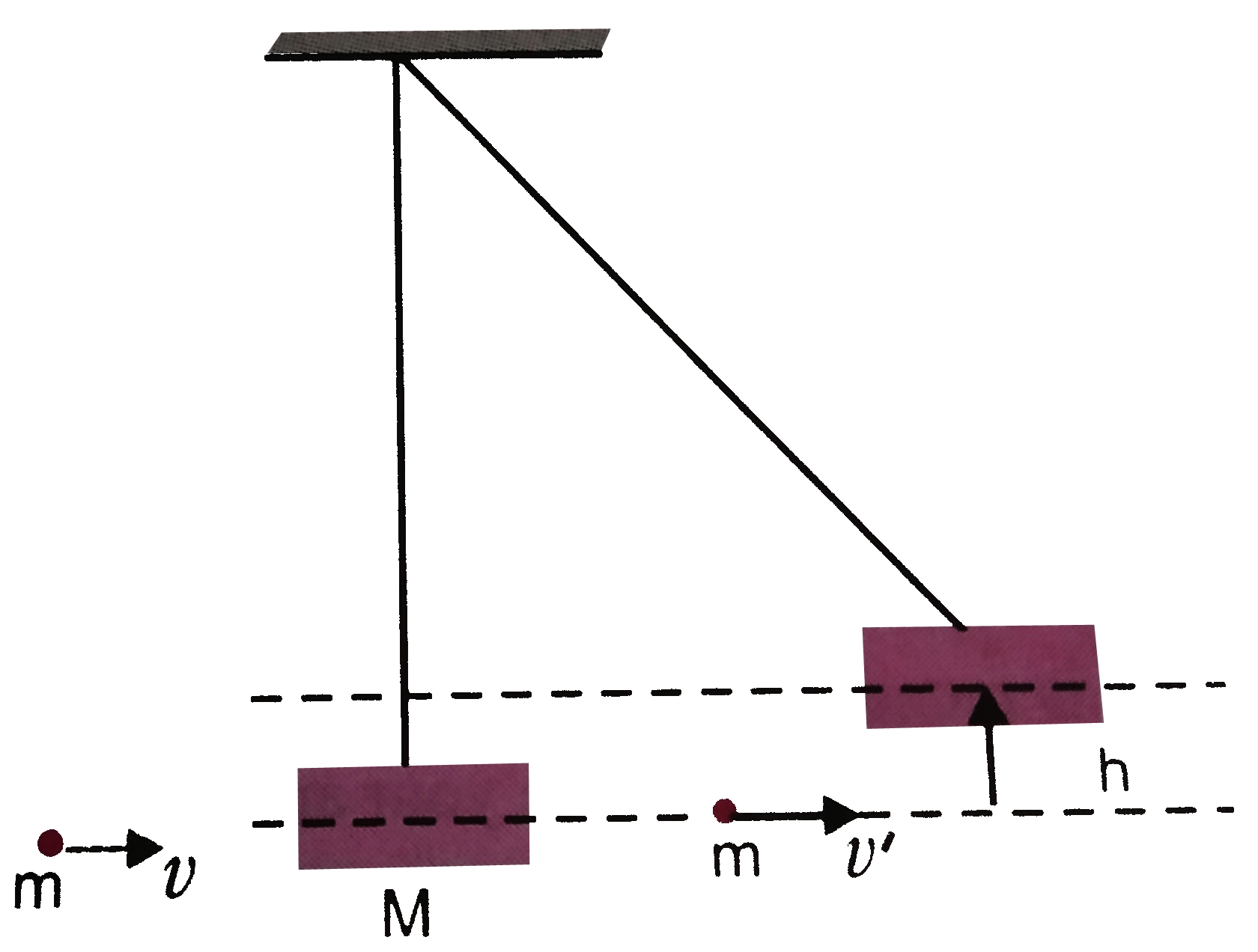 View Solution
View SolutionQuestion 224
Two identical 5 kg blocks are moving with same speed of 2m/s towards eachother along a frictionless horizontal surface. The two blocks collide, stick together and come to rest. Consider the two blocks as a system. Caluculate work done by (i) external forces (ii) internal forces. View SolutionQuestion 226
A 50 g lead bullet (specific heat 0.02) is initially at 30∘C. It is fired vertically upward with a speed of 840ms−1. On returning to the starting level it strikes a cake of ice at 0∘C. How much ice is melted ? Assume that all energy is spent in melting only. Latent heat of ice =336jg−1. View SolutionQuestion 229
A perosn decides to use his bath tub water to generate electric power to run a 40W bulb. The bath tub is located at a height of 10m from the ground and it holds 200 litres of water. He instals a water driven wheel generator on the ground. At what rate should the water drain from the bath tub to light the bulb? How long can he keep the bulb on , if bath tub was full initially ? Efficiency of generator is 90%. Take g=9.8m/s2View SolutionQuestion 231
The displacement x of particle moving in one dimension, under the action of a constant force is related to the time t by the equation t=√x+3
where xis∈metersandt∈seconds . Find
(i) The displacement of the particle when its velocity is zero , and
(ii) The work done by the force in the first 6seconds. View SolutionQuestion 233
A bullet of mass 0.01J kg and travelling at a speed of 500m/s strikes a block of mass 2 kg which is suspended by a string of length 5m. The cnetre of gravity of the block is found to rise a vertical distance of 0.1m, figure. What is the speed of the bullet after it emerges from the block ? (g=9.8m/s2).
 View Solution
View SolutionQuestion 235
A soild ball of density half that of water falls freely under gravity from a height of 19.6 m and then enters water. Upto what depth will the ball go. How much time will it take to come again to the water surface? Neglect air resistandce and viscosity effects in water. (Take g=9.8m/S2).View SolutionQuestion 236
A massless platform is kept on a light elastic spring as shown in figure. When a small stone of mass 0.1 kg is dropped on the pan from a height of 0.24 m, the spring compresses by 0.01m. From what height should the stone be droppped to cause a compression of 0.04m in the spring ?
 View Solution
View SolutionQuestion 239
A block of mass m is pushed against a spring of spring constant k fixed at ne end to a wall. The block ocan side on a frictionless tableas shown in figure. The natural length of thespring is L0 and it is compressed ti half its natural length when the block is relesed. Find teh velocity of the block aa s function of its distance x from the wall .
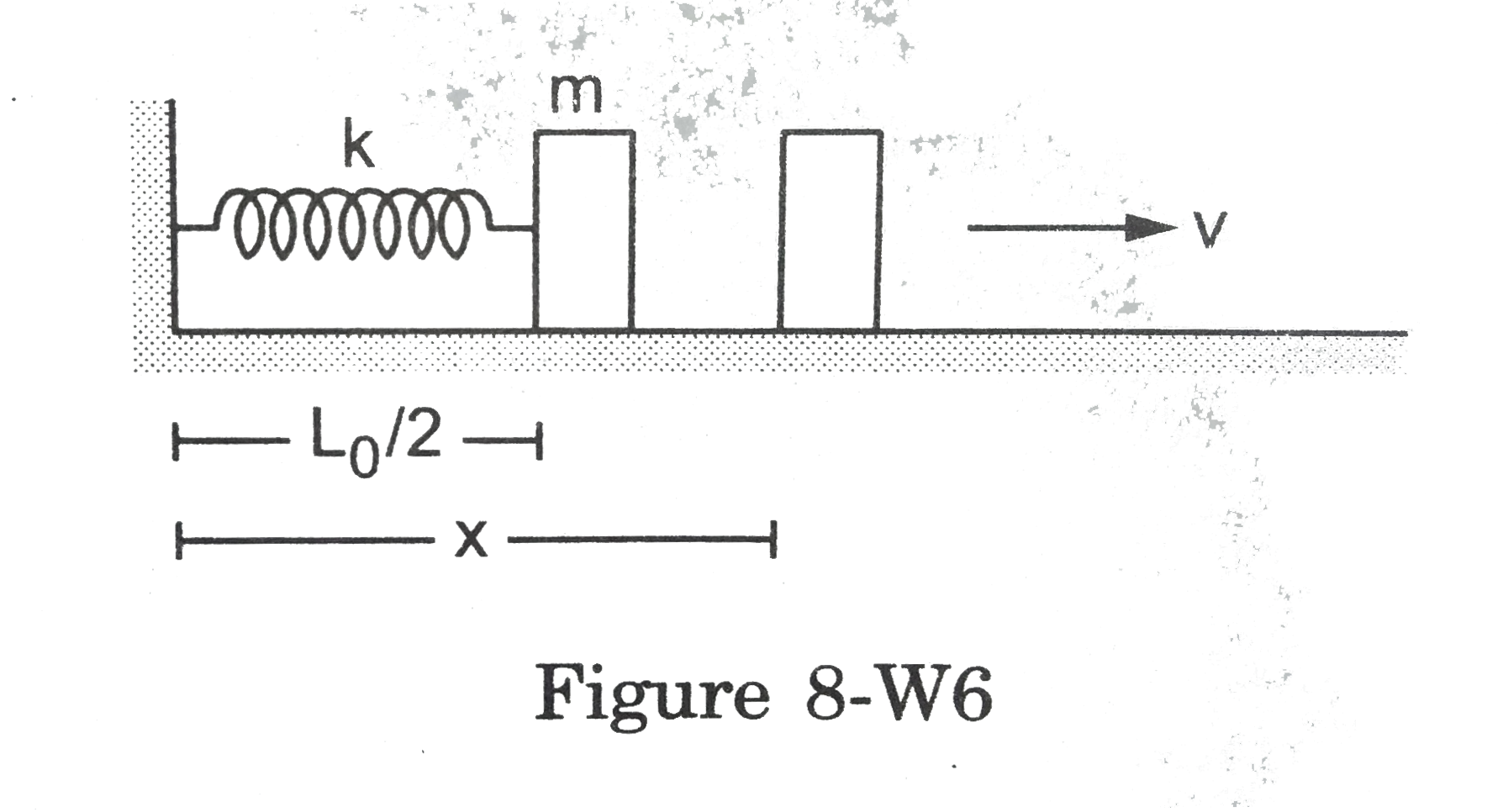 View Solution
View SolutionQuestion 240
A trolly of mass 200kg moves with a uniform speed of 36 km/h on a frictionless track. A child of mass 20kg runs on the trolly from one end to the other (10m away) with a speed of 4m/s relative to the trolly in a direction opposite to the trolly's motion and jumps out of the trolly. How much has teh trolly moved from the time the child begins to run ?View SolutionQuestion 241
A block of mas 2.0 kg is pulled up on a smooth incline of angle 300 with the horizontal. If the block moves wth an acceleration of 1.0ms2, find the power delivered by the pulling force at a time 4.0 s after the motion starts. What is the average power delivered during the 4.0 s after the motion starts?View SolutionQuestion 243
Figure, shows a vertical cross section of a surface. A and B are two points on the cross sections. A particle of mass 0.15kg is released from rest at A. (i) Assuming that particle reaches B with a speed of 8m/s and there is no resistance to motion, find the height of A above B.
(ii) Assuming instead that the particle reaches B with a speed of 6m/s and that the height of A above B is 4m, find work done against resistance to motion.
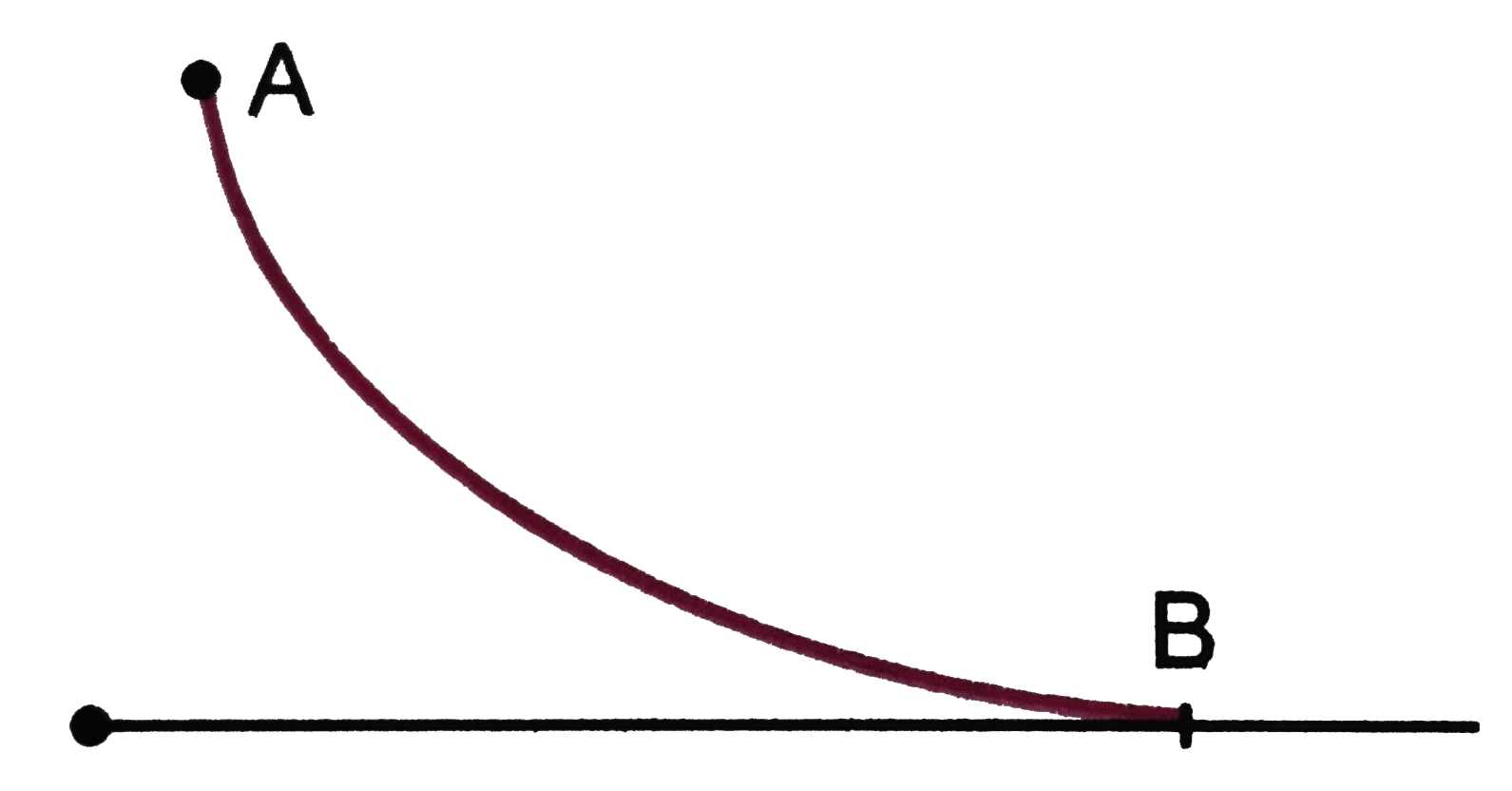 View Solution
View SolutionQuestion 244
The sign of work done by a force on a body is important to understand. State carefully if the following quantities are poisitve or negative :
(a) Work done by a man in lifting a bucket out of a well by means of a rope tied to the bucket.
(b) Work done by gravitational force in the above case. (c ) Work done by friction on a body sliding down an iniclined plane.
(d) Work done by an applied force on a body moving on a rough horizontal plane with uniform velocity.
(e) Work done by the resistive force of air on a vibrating pendulum in bringing it to rest. View SolutionQuestion 245
A body of mass 2 kg initially at rest moves under the action of an applied horizontal force of 7N on a table with coefficient of kinetic friction =0.1. Calculate the
(a) work done by applied force in 10s. (b) work done by friction in 10s.
(c ) work done by the net force on the body in 10s.
(d) change in K.E. of body in 10s, and interpret your result. View SolutionQuestion 246
Given in fig are examples of some potential energy functions in one dimension. The total enrgy of the particle is indicated by a cross on the ordinate axis. In each case, specify the regions, if any, in which the particle cannot be found for the given energy. Also, indicate the minimum total energy the particle must have in each case. Think of simple physical contexts for which these potential energy shapes are relevant.
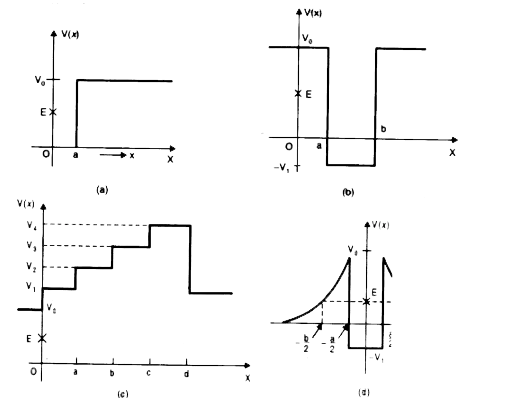 View Solution
View SolutionQuestion 247
The potential energy function for a particle executing simple harmonic motion is given by V(x)=12kx2, where k is the force constant of the oscillatore. For k=12Nm−1, show that a particle of total energy 1 joule moving under this potential must turn back when it reaches x=±2m.View SolutionQuestion 248
Answer the following:
a) The casing of a rocket in flight burns up due to friction. At whose expense is the heat required for burning obtained? The rocket or the atmosphere?
b) Comets move around the sun in highly elliptical orbits. The gravitational force on the comet due to the sun is not normal to the comet's velocity in general. Yet the work done by the gravitatonal force over every complete orbit of the comet is zero. Why?
c) An artificial satellite orbiting the earth in very atmosphere loses its energy grdually due to dissipation against atmospheric resistance, howerver small. Why then does its speed increase progressively as it comes closer and closer tothe earth? d)In fig i) the man walks 2m carrying a mass of 15 kg on his hands. In Fig ii) he walks the same distance pulling the rope behind him. The rope goes over pulley, and a mass of 15 kg hangs at its other end. In which case is the work done greater?
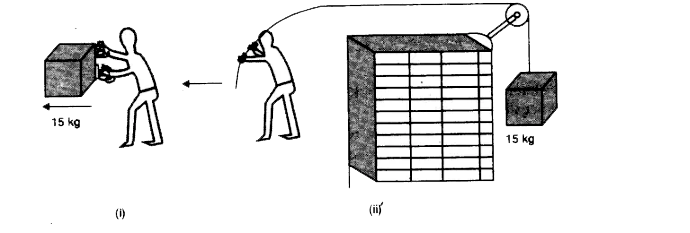 View Solution
View SolutionQuestion 249
Underline the correct alterntaive:
a) when a conservative force does positivie work on a body, the potential energy of the body increase/decreases/remains unaltered.
work done by a body against friction always results in a loss of its kinetic /potential energy.
c) The rate of change of total momentum of a many-particle system is proportional to the external force/ sum of the internal forces on the system.
d) In an inelastic collision of two bodies, the quantities which do not change after the collision are the total kinetic energy/total linear momentum/total enregy of the system of two bodies. View SolutionQuestion 250
State if each of the following statements is true or false. Give reasons for your answer.
a) In an elastic collision of two bodies, the momentum and energy of each body is conserved.
b)Total energy of a systm is always conserved,no matter what internal and external forces on the body are present.
Work done in the motion of a body over a closed loop is zero for every force in nature.
d) In an inelastic collision, the final kinetic energy is always less than the initial kinetic energy of the sytem. View SolutionQuestion 251
Anwer carefully, with reasons:
a) In an elastic collision of two billiard balls, is the total kinetic energy conserved during the short time of collision of the balls (i.e. when they are in contact)?
Is the total linear momentum conserved during the short time of an elastic collision of two balls?
c) What are the answers to a) and b) for an inelastic collision?
d) If the potenital energy of two billiard balls depends only on the separation distance between their centers, is the collision elastic or inelastic? (note we are talking here of potential energy corresponding to the force during collision, not gravitational potential energy).View SolutionQuestion 254
A body constrained to move along the z-axis of a co-ordinate system, is subjected to a constant force →F given by →F=−ˆi+2ˆj+3ˆk Newton where ˆi,ˆjand ˆk represent unit vectors along x-,y-,and z-axes of the system, respectively. Calculate the work done by this force in displacing the body through a distance of 4m along the z-axis.View SolutionQuestion 255
An electron and a proton are detected in a cosmic ray experiment, the first with kinetic energy 10 keV and second with 100keV. Which is faster, the electron or proton ? Obtain the ratio of their speeds. Take mass of electron 9.11×10−31kg. Mass of proton =1.67×10−27kg and 1eV=1.6×10−19J.View SolutionQuestion 256
A rain drop of radius 2mm, falls from a height of 500 m above the ground. It falls with decreasing acceleration due to viscous resistance of air until half its original height. It attains its maximum (terminal ) speed, and moves with uniform speed there after. What is the work done by the gravitational force on the drop in the first half and second half of its journey ? Take density of water =103kg/m3. What is the work done by the resistive force in the entire journey if its speed on reaching the ground is 10ms−1 ?View SolutionQuestion 259
Two identical ball bearings in contact with each other and resting on a frictionless table are hit head on by another ball bearing of the same mass moving initially with a speed v, figure,. If the collision is elastic, which of the following is a possible result after collisioin?
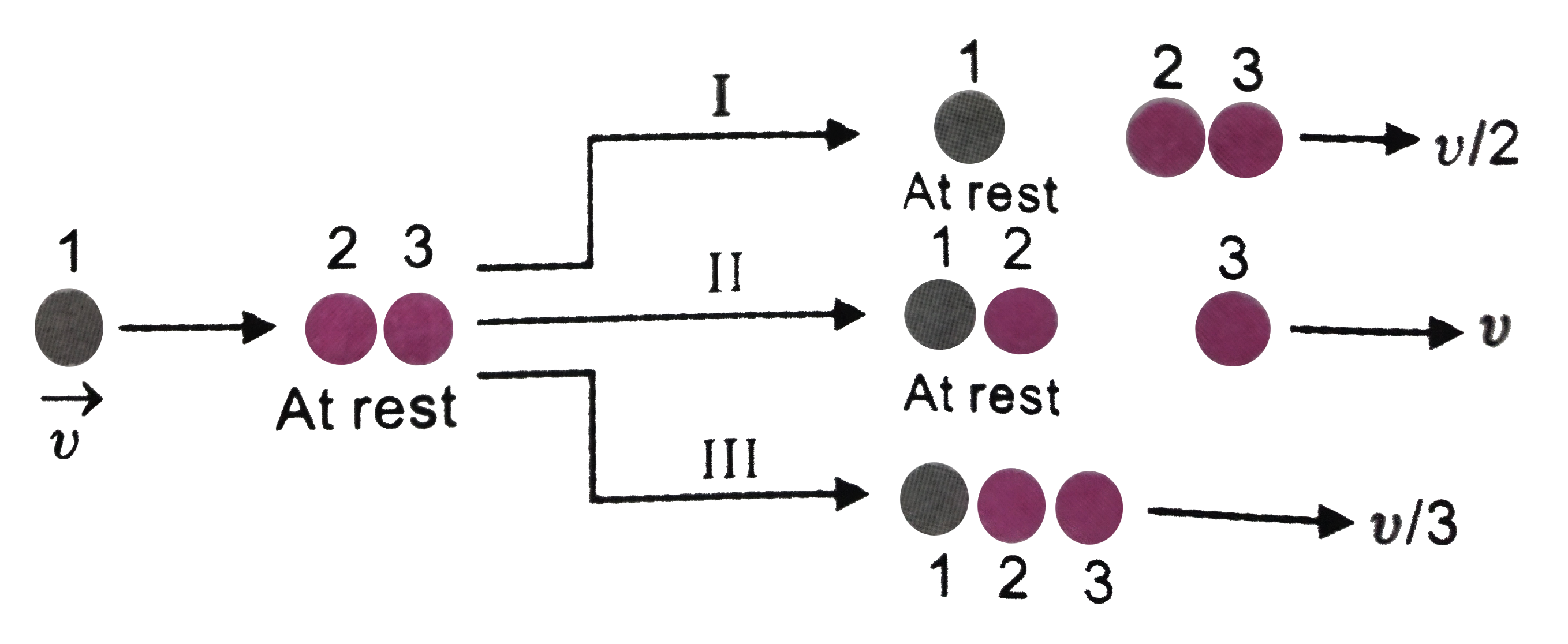 View Solution
View SolutionQuestion 261
The bob A of a simple pendulum is released from a horizontal position A as shownin in figure. If the length of the pendulum is 1.5m , what is the speed with which the bob arrives at the lowermost point B, given that it dissipates 5% of its initial energy against air resistance ?
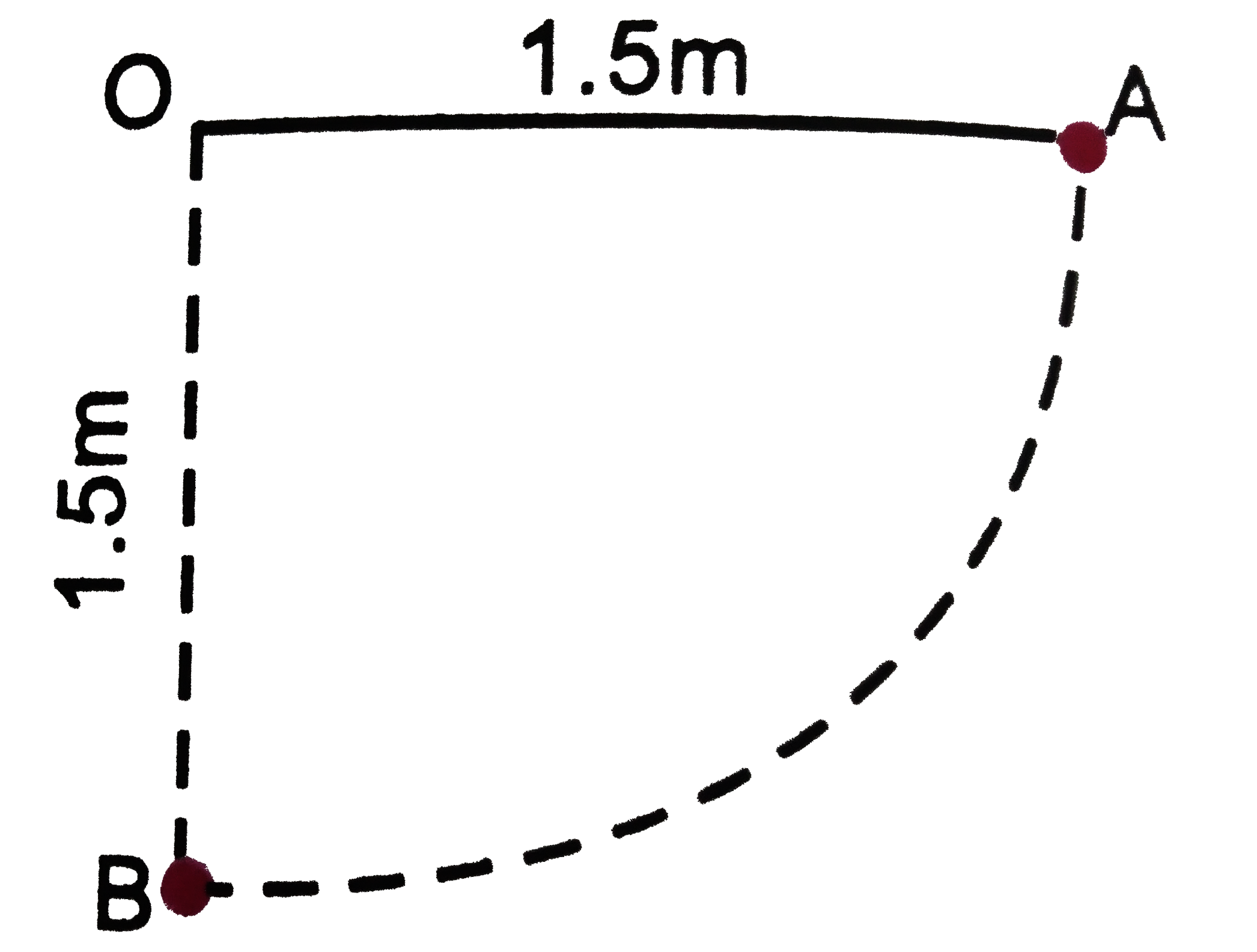 View Solution
View SolutionQuestion 262
A trolley of mass 300 ks carrying a sand bag of 25 kg is moving uniformly with a speed of 27km/h on a frictionless track. After a while, sand starts leaking out of a hole on the trolley's floor at the rate of 0.05kgs−1. What is the speed of the trolley after the entire sand bag is empty ?View SolutionQuestion 264
The blades of a windmill sweep out a circle of area A. (a) If the wind flows at a velocity υ perpendicular to the circle, what is the mass of air passing through it in time t? (b) What is K.E. of the air ? (c) Assume that the wind mill converts 25% of the wind's energy into electrical energy , and that A=30m2,υ=36km/h and the density of air is 1.2kg/m3. What is electrical power produced ? View SolutionQuestion 265
A person trying to lose weight (dieter ) lifts a 10 kg mass through 0.5m, 1000 times, A ssume that the potential energy lost each time she lowers the mass is dissipated (a) How much work does she does against the gravitational force ? (b) Fat supplies 3.8×107J of energy per kilogram which is converted to mechanical energy with a 20% efficiency rate. How much fat will the dieter use up ?View SolutionQuestion 266
A family uses 8kW of power. (a) Direct solar energy is incident on the horizontal surface at an average rate of 200 W per square metre. If 20% of this energy can be converted to useful electrical energy, how large an area is needed to supply 8kW? (a) Compare this area to that of the roof of a typical house. View SolutionQuestion 267
A bullet of mass 0.012 kg and horizontal speed 70ms−1 strikes a block of wood of mass 0.4 kg and instantly comes to rest with respect to the block. The block is suspended from the ceiling by thin wire. Calculate the height to which the block rises. Also, estimate the amount of heat produced in the block. View SolutionQuestion 269
A 1kg block situated on a rough incline is connected to a spring of spring constant 100Nm−1 as shown in figure,. The block is released from rest with the spring in the unstretched position. The block moves 10cm down the incline before coming to rest. Find the coefficient of friction between the block and the incline. Assume that the spring has negligible mass and the pulley is frictionless.
 View Solution
View SolutionQuestion 270
A bob of mass 0.3 kg falls from the ceiling of an elevator moving down with a uniform speed of 7ms−1. If hits the floor of the elevator (length of the elevator = 3m) and does not rebound. What is the heat produced by the impact ? Would your answer be different if the elevator were stationary ?View SolutionQuestion 271
A trolly of mass 200kg moves with a uniform speed of 36 km/h on a frictionless track. A child of mass 20kg runs on the trolly from one end to the other (10m away) with a speed of 4m/s relative to the trolly in a direction opposite to the trolly's motion and jumps out of the trolly. How much has teh trolly moved from the time the child begins to run ?View SolutionQuestion 274
A and B are two particles having the same mass m. A is moving along X-axis with a speed of 10ms−1 and B is at rest. After undergoing a perfectly elastic collision with B, particle A gets scattered through an angle of 30∘. What is th edirection of motion of B, and the speeds of A and B, after the collision?View SolutionQuestion 275
A and B are two particles having the same mass m. A is moving along X-axis with a speed of 10ms−1 and B is at rest. After undergoing a perfectly elastic collision with B, particle A gets scattered through an angle of 30∘. What is th edirection of motion of B, and the speeds of A and B, after the collision?View SolutionQuestion 276
A and B are two identical balls. A moving with a speed of 6m/s, along the positive X-axis, undergoes a collision with B initially at rest. After collision, each ball moves along directions making angles of ±30∘ with the X-axis. What are the speeds of A and B after the collision ? I s this collision perfectly eleastic ?View SolutionQuestion 291
Consider a one-dimensional motion of a particle with total energy E. There are four regions A, B, C and D is which the relation between potential energy U, kinetic energy (K) and total energy E is as given below
RegionA: U>E Region B: U<E
Region C: K<E Region D: U>E
State with reason in each case whether a particle can be found in the given region or not.View SolutionQuestion 292
The bob A of a pendulum released from horizontal to the vertical hits another bob B of the same mass at rest on a table as shown in figure.
If the length of the pendulum is 1m, calculate
(a) the height to which bob A will rise after collision.
(b) the speed with which bob B starts moving.
Neglect the size of the bobs and assume the collision to be elastic.
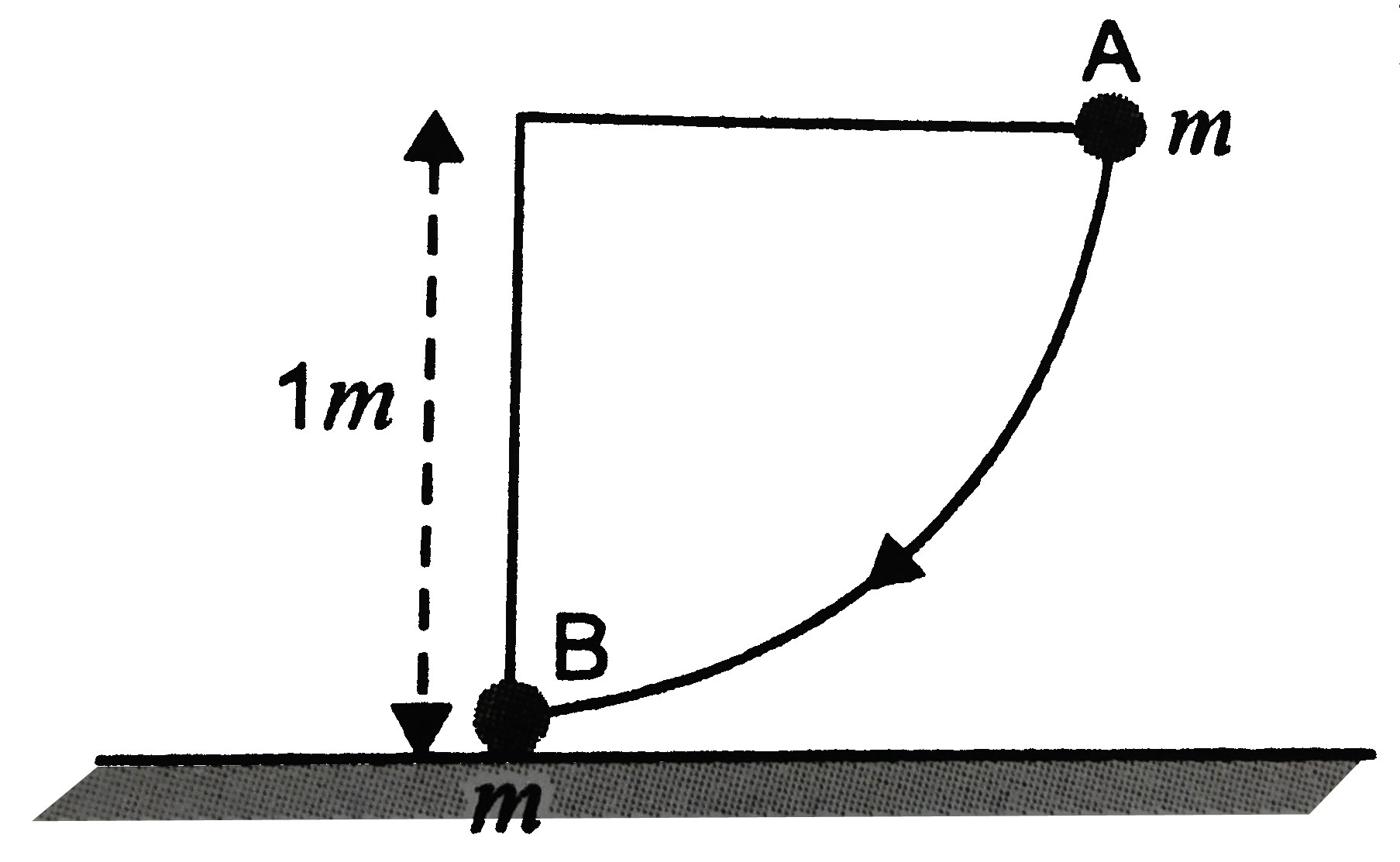 View Solution
View SolutionQuestion 294
Two pendulums with identical bobs and lengths are suspended from a common support such that in rest position, the two bobs are in constact, . One of the bobs is released after being displaced by 10∘ so that it collides elastically head - on with the other bob.
(a) Describe the motion of two bobs.
(b) Draw a graph showing variation in energy of either pendulum with time,for 0≤t≤2T , where T is the period of each pendulum.
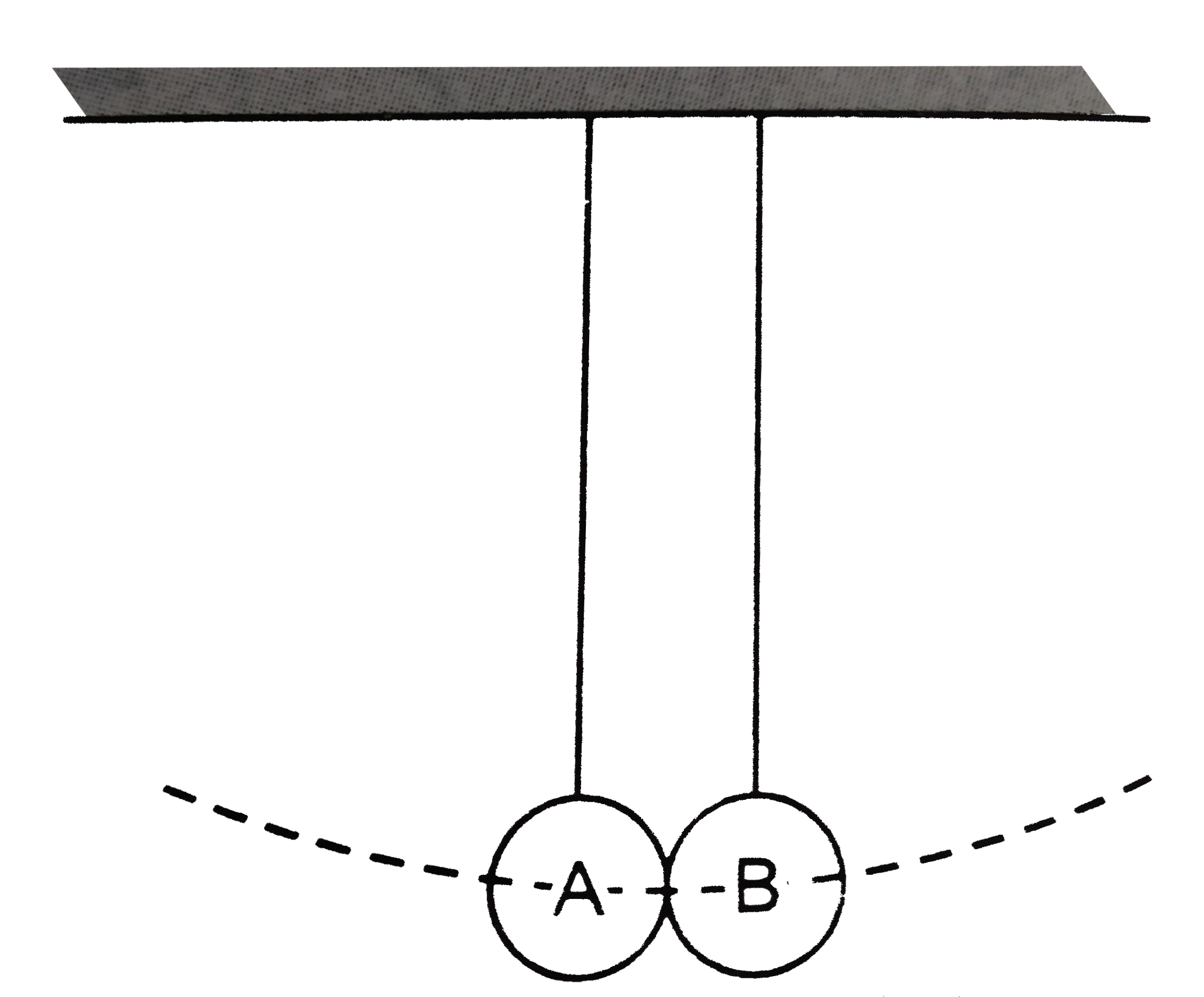 View Solution
View SolutionQuestion 296
An engine is attahed to a wagon through a shock absorber of length 1.5m. The system with a total mass of 50,000kg is moving with a speed of 36kmh−1 when the brakes are applied to bring it to rest. In the process of the system being brought to rest, the spring of the shock absorber gets compressed by 1.0m. If 90% of energy of the wagon is lost due to friction, calculate the spring constant. View SolutionQuestion 297
An adult weighing 600N raises the centre of gravity of his body by 0.25m while taking each step of 1m lenth in jogging. If he jogs for 6km, calculate the energy utilised by him in jogging assuming that there is no energy loss dur to friction of ground and air. Assuming that the body of the adult is capable of converting 10% of energy intake in the form of food, calculate the energy equivalent fo food that would be required to compensate energy utilised for jogging. View SolutionQuestion 298
On complete combustion , a litre of petrol gives off heat equivalent to 3×107J . In a test drive, a car weighing 1200kg, including the mass of driver, runs 15kg per litre while moving with a uniform speed on a straight track. Assuming that friction offered by the road surface and air to be uniform, calculate the force of friction acting on the car during the test drive. If the efficiency of the car engine were 0.5.View SolutionQuestion 299
A block of mass 1kg is pushed up a surface inclined to horizontal at an angle of 30∘ by a force of 10N parallel to the inclined surface [figure]. The coefficient of friction between block and the incline is 0.1. If the block is pushed up by 10 m along the incline, calculate
(a) work done against gravity
(b) work done against force of friction
(c) increase in potential energy
(d) increase in kinetic energy
(e) work done by applied force.
 View Solution
View SolutionQuestion 300
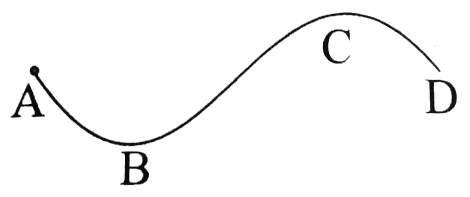
A curved suface is shown in figure. The portion BCD is free of friction. There are three spherical balls of identical radii and masses. Balls are released from rest one by one from A which is at a slightly greater height than C.
Wioth the surface AB, ball 1 has large enough friction to cause rolling down without slipping, ball 2 has a small friction and ball 3 has a negligible friction.
(a) For which ball is total mechanical energy conserved?
(b) Which ball(s) can reach D?
(c )For ball which do not reach D, which of the balls can reach back A?View SolutionQuestion 301
A rocket accelerates straight up by ejecting gas downwards. In a small time interval Δt, it ejects a gas of mass Δm at a relative speed u . Calculate KE of the entire system at t+Δt and t and show that the device that ejects gas does work =(12)Δm.u2 in this time interval (neglect gavity). View SolutionQuestion 303
A baloon filled with helium rises against gravity increasing its potential energy. The speed of the baloon also increases as it rises. How do you reconcile this with the law of conservation of mechanical energy ? You can neglect viscous drag of air and assume that density of air is constant. View SolutionQuestion 304
Two balls A and B of masses 0.3 kg and 0.2 kg respectively are moving along positive X-axis and negaive X-axis with velocities 2.0 m / s. They collide and thereafter move in the directions opposite to their original directions. Find the velocities of A and B after collision. Also, calculate total K.E. of the ball before and after collision. View SolutionQuestion 306
An object of mass 5 kg is projecte with a velocity of 20ms−1 at an angle of 60∘ to the horizontal. At the highest point of its path , the projectile explodes and breaks up into two fragments of masses 1kg and 4 kg. The fragments separate horizontally after the explosion, which releases internal energy such that K.E. of the system at the highest point is doubled. Calculate the separation betweent the two fragments when they reach the ground. View SolutionQuestion 307
Figure, shows the transverse section of a hill. A ball of mass 0.5 kg is given a K.E. of 300J at A and rolls down to C. Assuming that there is no friction, calculate
(i) K.E. of ball at B
(ii) P.E. of ball at C, taking P.E. at A equal to zero
(iii) speed of the ball at C, and
(iv) change is P.E. in going from B to C . Take g=10m/s2
 View Solution
View SolutionQuestion 308
A 100 metric ton engine is moving up a slope of gradient 5∘ at a speed of 100 metre/ hour. The coefficient of friction between the engine and the rails is 0.1. If engine has an efficiency of 4% for converting heat into work, find the amount of coal the engine has to burn in one hour. Burning of 1 kg coal yields 50000J. View SolutionQuestion 313
A soild ball of density half that of water falls freely under gravity from a height of 19.6 m and then enters water. Upto what depth will the ball go. How much time will it take to come again to the water surface? Neglect air resistandce and viscosity effects in water. (Take g=9.8m/S2).View SolutionQuestion 314
According to work energy theorem or work energy principle, work done by net force in displacing a body is always equal to change in K.E. of the body. Similarly , if some work is drawn from the body, K.E. of the body decreases by the same amount. In either process, we assume that potential energy of the body does not change.
Read the above passage and answer the following question:
(i) A car weighing 500 kg is running at a speed of 72km/h. In how much distance will it stope by applying a braking force of 4000N?
(ii) What are the implication of this theorem in day to day life ?View SolutionQuestion 315
In every day language, we often use the terms work, energy and power. The exact definition of these terms are related loosely to the physiological pictures these terms generate in our mind. Work done on a body is stored in the body in the form of energy. Thus, energy is capacity of the body to do the work. Power determines the rate of doing work. Tiem taken to complete the work is significant in power and not in energy.
Read the above passage and answer the following questions :
(i) Rakesh can put in long hours of work without getting tired. Does he have large energy or large power ?
What is needed in boxing or karate ?
(iii) Who is said to be a powerful leader ? View SolutionQuestion 316
Rahul and Ankur are two friends planning to go on Bharat Darshan. Rahul is a Science graduate and Ankur is an Arts graduate. They go to hire a taxi. For Maruti van as taxi, the rate is Rs. 6 per km and For an SUV as taxi, the rate is Rs. 9 per km. Rahul suggestes to Ankur to hire an SUV as taxi instead of Maruti Van , inspite of the cost factore.
Read the above passage and answer the following question.
(i) Do you agree with Rahul ? Justify.
(ii) What values are displayed by Rahul?View SolutionQuestion 317
A collision in which there is absolutely no loss of K.E. is called an elastic collision. In such a collision, the linear momentum , total energy and kinetic energy, all are conserved.The coefficient of restitution / resilience of perfectly elastic collisions is unity.
Read the above passage and answer the following questions :
(i) When two bodies of equal masses undergo perfectly elastic collision in one dimension, what happens to their velocities ?
(ii) How is this fact applied in a nuclear reactor ?View SolutionQuestion 318
A force is said to be conservative if work done by or agains the force depends only on initial and final positions of the body and not on the nature of path followed.
A force is said to be non-conservative, if work done by or against the force in moving a body from one position to another, depeds on the path followed between these two positions.
Potential energy is defined only for conservative forces. It does not exist for non-conservative forces.
Read the above passage and answer the following question :
(i) Give two examples, each for conservative and non-conservative forces.
(ii) Potential energy does not exist for non-conservative forces. What does it imply ini day to day life ?View Solution
All Exercises from PRADEEP PHYSICS (HINGLISH) Class 11 PHYSICS WORK, ENERGY AND POWER
- ASSERTION-REASON TYPE QUESTIONS
- COMPREHENSION
- FILL IN THE BLANKS
- INTEGER TYPE QUESTIONS
- JEE (MAIN AND ADVANCED)
- MULTIPLE CHOICE QUESTION
- NCERT( MULTIPLE CHOIDE QUESTIONS-1)
- PROBLEMS FOR PRACTICE
- ADDITIONAL EXERCISES
- ADVANCED PROBLEMS FOR COMPETITIONS
- CONCEPTUAL PROBLEMS
- CURIOSITY QUESTIONS
- HIGHER ORDER THINKING SKILLS
- LONG ANSWER QUESTION
- NCERT EXERCISES WITH SOLUTIONS
- SAMPLE PROBLEM
- SHORT ANSWER QUESTION
- SOLVED EXAMPLES
- VALUE BASED QUESTION
- VERY SHORT ANWER QUESTION.

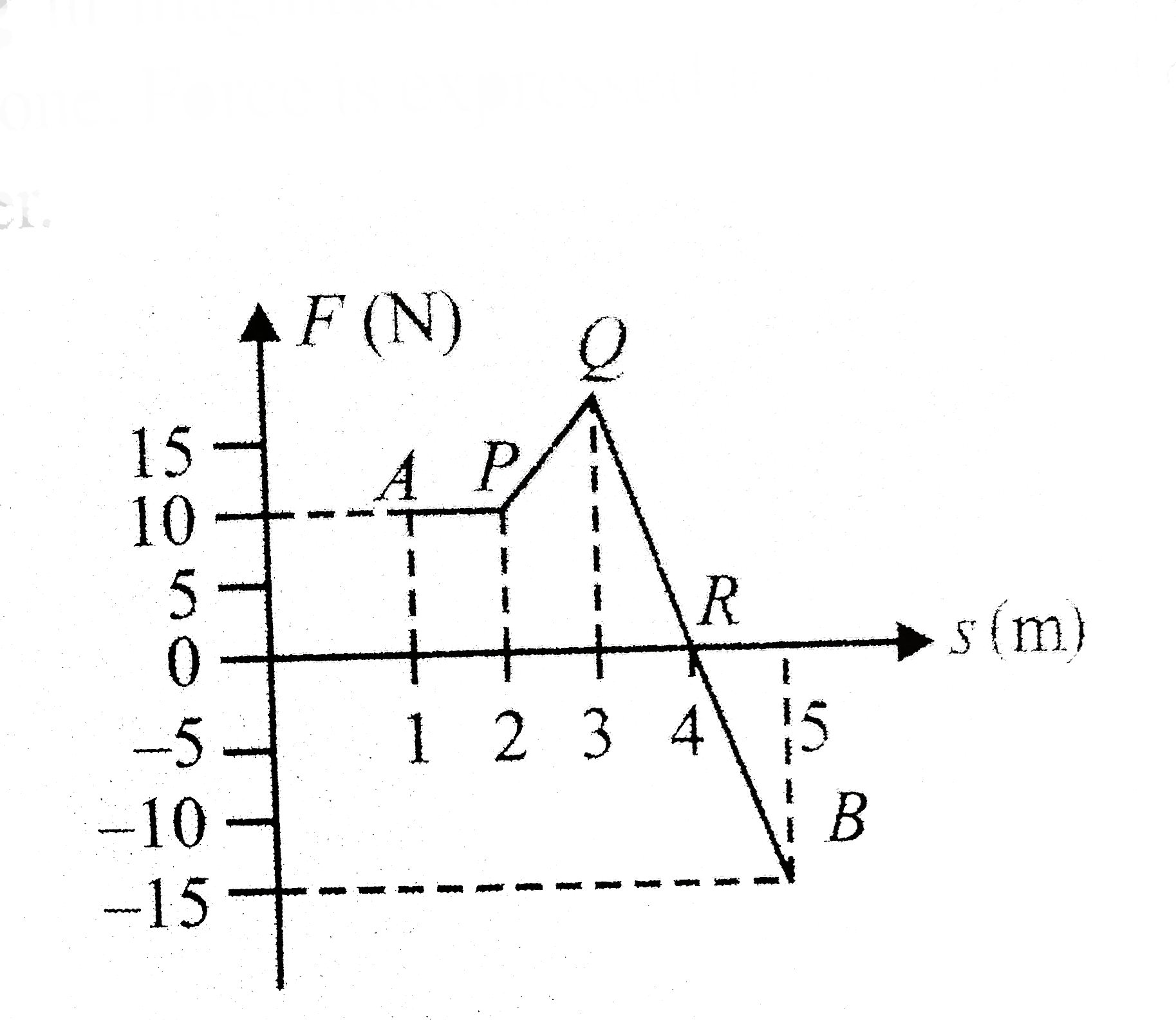
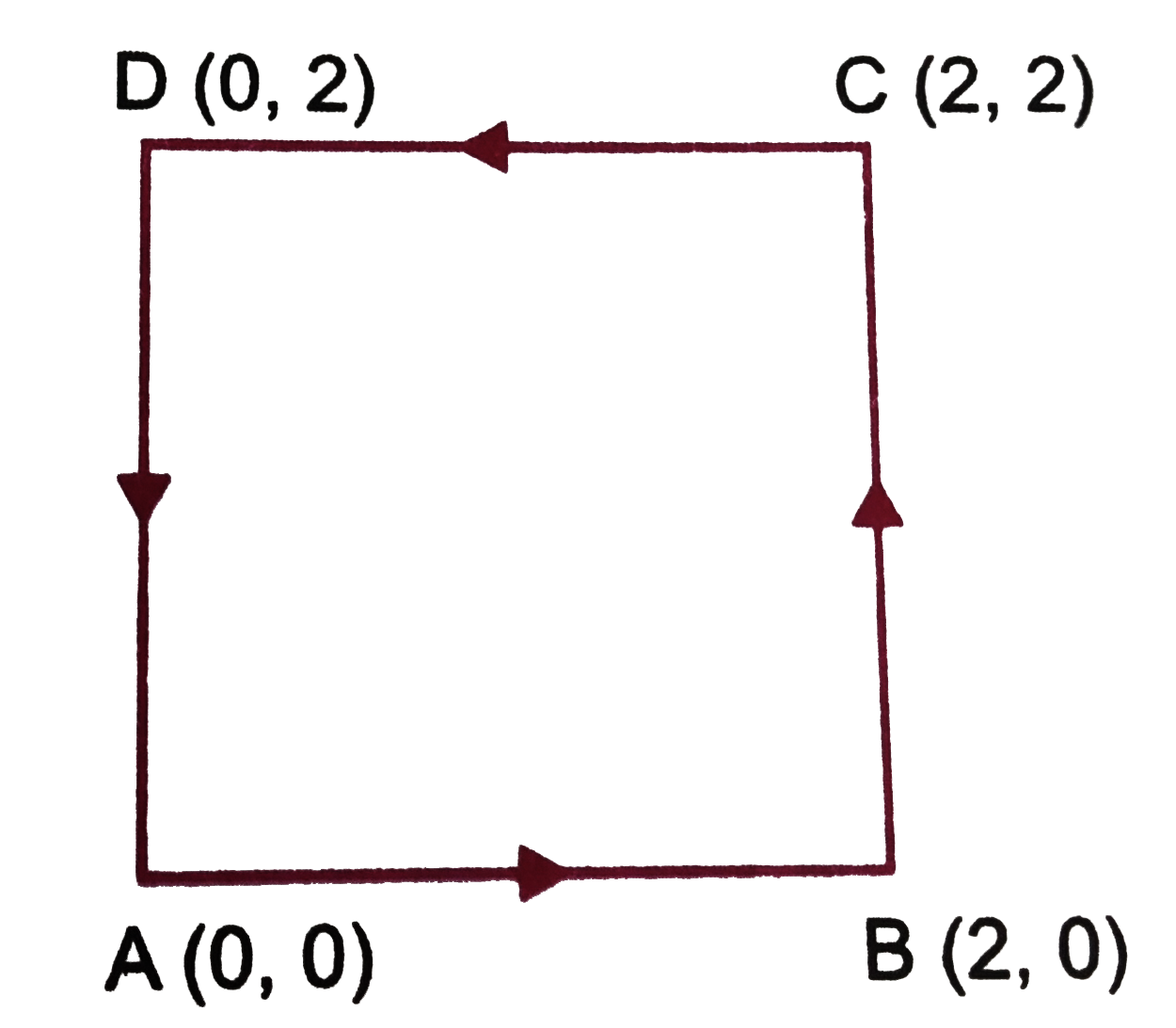

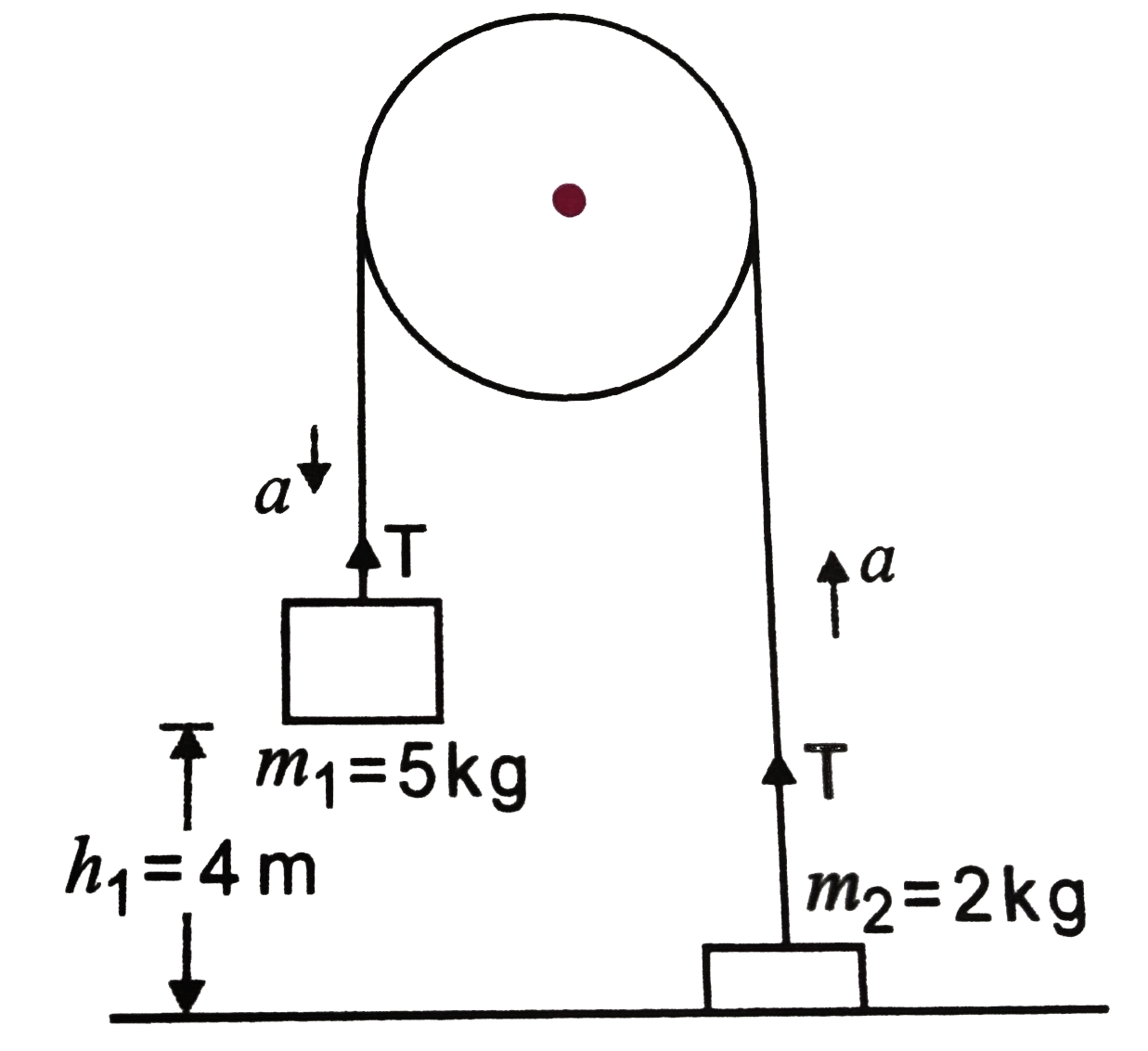
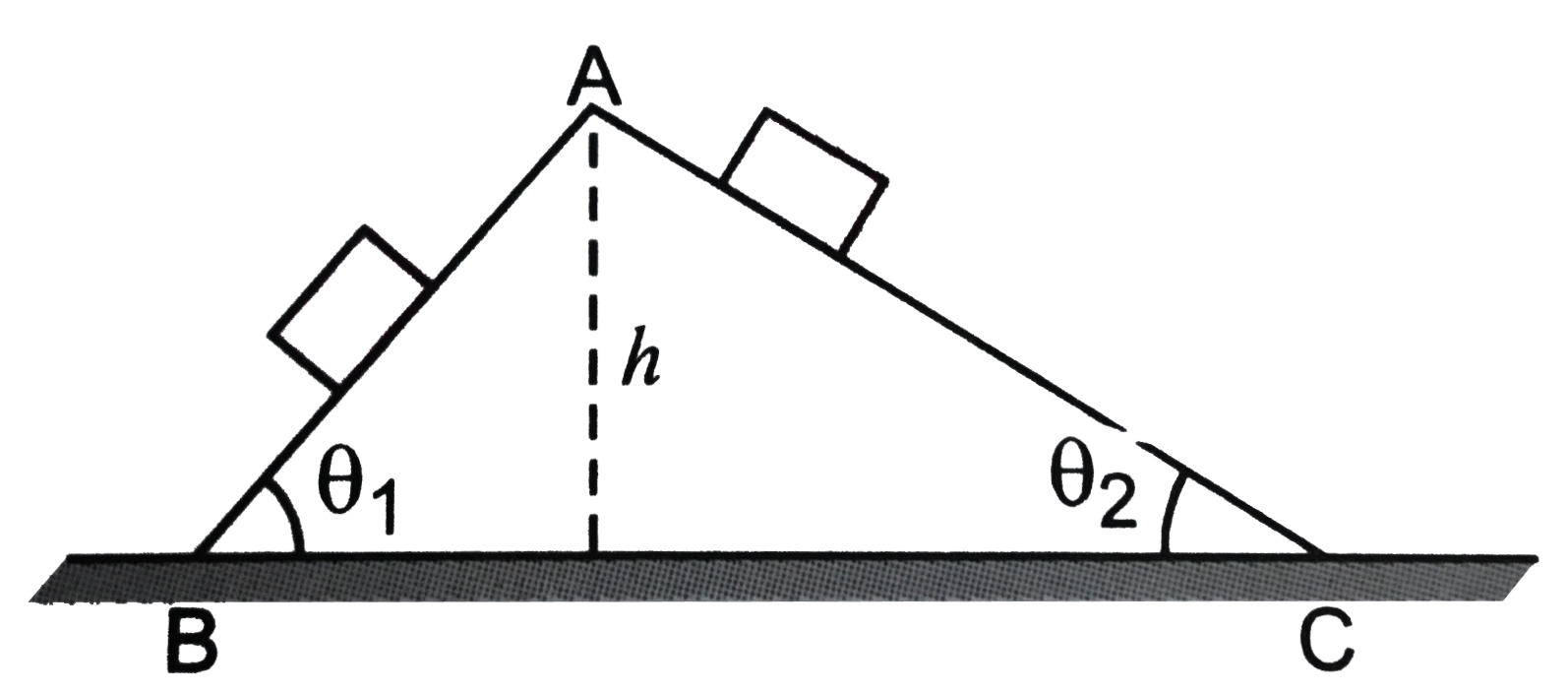
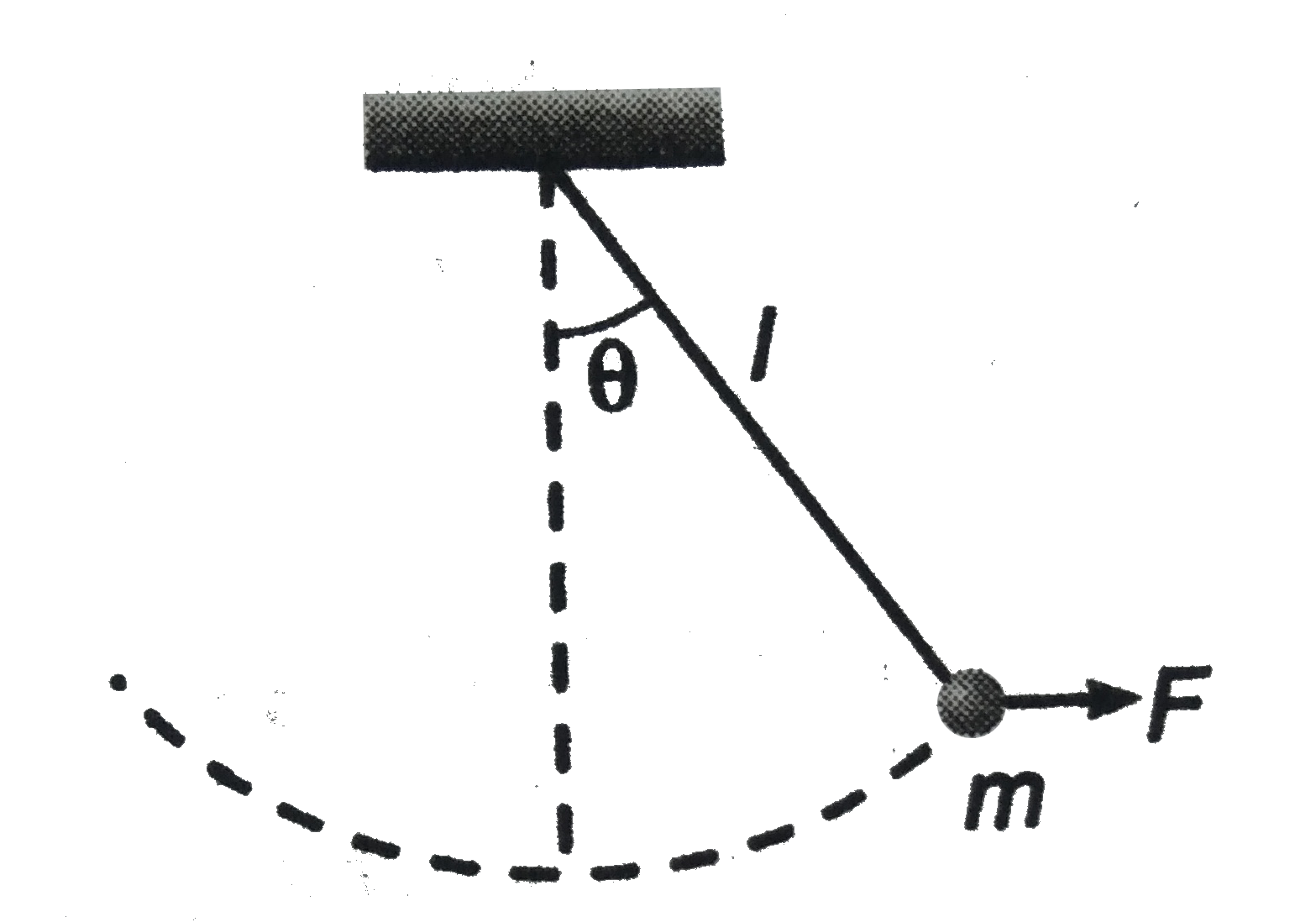 .
. 